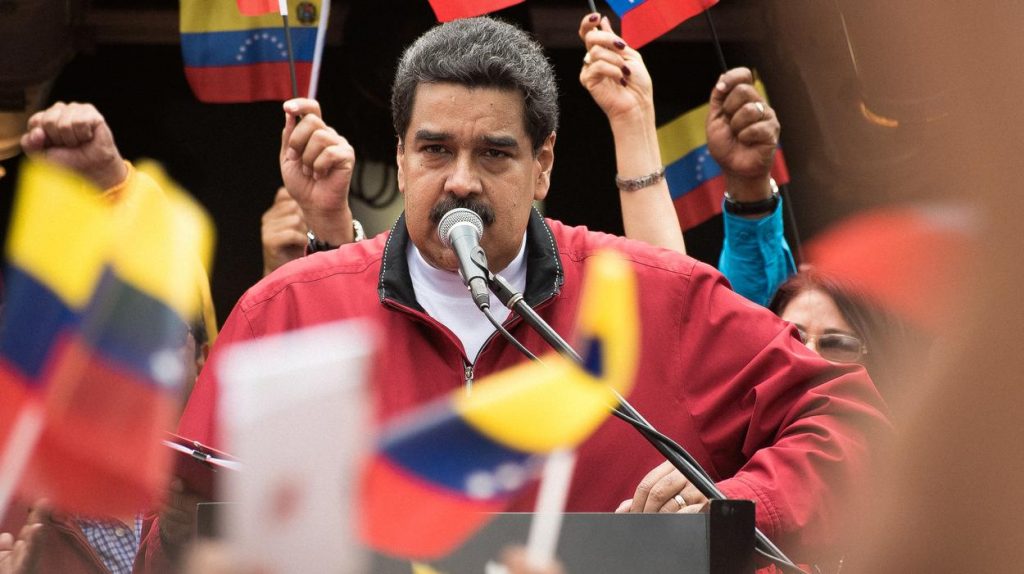The government released the Petro’s white paper on Tuesday.

Venezuela’s economy is in deep trouble. To dig itself out, on Tuesday the Venezuelan government unveiled its full plans for the Petro, a bespoke digital currency backed by the country’s oil resources.
Controversy has surrounded the Petro, the price of which will be pegged to the value of Venezuela’s oil per barrel—roughly $60 in early January, according to Reuters—since day one. Opposition legislators in Venezuelan Parliament see the currency as an “illegal” attempt by President Nicolás Maduro to essentially get advance payment for the eventual sale of its oil reserves. Cryptocurrency enthusiasts, meanwhile, have argued that a centralized government creating a decentralized currency defeats the purpose of the technology entirely.
The Petro white paper, released on Tuesday, will only add fuel to the fire of criticism. (The Petro site was offline all morning, but government-supported news outlet Alba Ciudad uploaded a copy, which we’ve re-uploaded below in case that goes offline too.) The white paper reveals that prior to the Petro’s launch, Venezuela will create a token on the Ethereum blockchain and sell it. Tokens are not cryptocurrencies, like the Petro will be—they’re digital assets created out of thin air and their value is only whatever people are willing to pay for them.
Most token sales on Ethereum (events known as Initial Coin Offerings) are used to raise money to fund development, but the real fundraiser for Venezuela will be the public offering of Petro itself. Instead, according to the white paper, the token pre-sale “will promote and guarantee demand for the Petro Initial Offer, which will be made later.”
The idea seems to be that people will snap up tokens in order to trade them in for Petros later, when those go on sale. The “reference sale price” for the tokens will be the same as Petro—$60—but discounts will be applied to promote token ownership, and in return Petro. Basically, it’s guaranteeing demand for the Petro by manufacturing a financial incentive.
According to the white paper, the token pre-sale will start on March 1, with the initial offering of Petros taking place on March 29. However, President Maduro said on Tuesday that the token pre-sale would begin on February 20.
The Venezuelan government will accept Petros as payment for things like taxes and public services, and will provide financial incentives for merchants in the country to adopt the Petro. The government also sees the Petro blockchain as being an information platform, much like how the Bitcoin blockchain can be used to host or track public records.
Just over half of the funds raised through the sale of Petro will be kept by the government in a “Sovereign Fund,” and the rest will be used to fund technological development.
Despite being clearly born of economic desperation, the Petro has a political bent as well. The white paper positions the currency as being a way to further free Venezuela from the grips of US financial control. “Its antecedents go back to proposals of financial and monetary coordination before the hegemony of the US dollar,” the white paper states, “which resurfaced after the financial crisis of late of the last decade.” It name-checks Bancor, an idea for a supranational unit of account to equalize trade between countries that was conceptualized by John Maynard Keynes in the 1940s.
Despite the sunny optimism of the white paper, the complexity of having a token pre-sale backing an ICO, which is then backed by oil reserves, casts an aura of doubt on Petro’s feasibility. There’s the feeling that Venezuela has been here before. The social gains made during the “golden decade” of Hugo Chavez’s socialism were buoyed by a black tide of oil money, and whether you believe the current state of affairs is due to crashing oil prices or mismanagement, the lesson is that oil is not a silver bullet in Venezuela.
And neither, perhaps, will cryptocurrency be.
